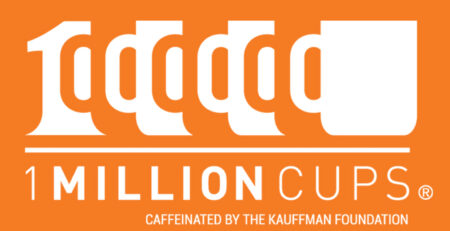What Small Businesses Need to Know about Intellectual Property Rights
Whether you have a unique business name, secret recipe or invention, as a small business owner, you need to know how to protect your business and understand your intellectual property rights. For some businesses, it could be a matter of success or failure.
Before we dive in, one thing to keep in mind when protecting your intellectual property is that you may want to consult a lawyer who specializes in intellectual property to ensure you filed your paperwork correctly and that you understand every asset of your copyrights, trademarks and patents.
What is intellectual property?
Intellectual property or IP is one of the ways you can protect yourself and help grow your business. IP is the expression of ideas in either a creative, scientific or business sense. Our government offers rights to the people that create and express themselves in unique ways by allowing individuals and businesses to protect their original works.
There are a lot of different ways that you can protect your intellectual property. Here are the three main categories of intellectual property protection:
● Copyrights: protection provided to authors of original works of authorship
● Trademarks: protects words, phrases, pictures, designs or any unique signifier or mark that is used in connection with the sale of goods or services
● Patents: keeps others from being able to make or sell a particular invention for a limited time in exchange for disclosing the details of the invention to the patent office
Now let’s break these down to determine what type of protection you need to file as a small business owner.
Copyrights
A copyright gives the creator of an original work exclusive rights to print, publish, perform, film or record literary, artistic or musical material and allows the creator the authorization to determine if it may be used by others.
What can be protected with a copyright: Literary works including books, newspaper articles, written speeches, poems. Musical works including lyrics and music. Dramatic works including plays, musicals. Choreographic works including dances, model diagrams, instructions for a dance. Pictorial graphic and sculptural works including photography, paintings and sculptures. Audiovisual works and sound recordings can be bundled such as karaoke tracks that contain a visual and sound element or a song and a recording of a song. Architectural works including unique visual designs of a building.
How copyrights work: To get protection, the work needs to be original to the author. It doesn’t have to be a totally new concept; however, it has to be tangible, as in it has to be seen, viewed, perceived or readable by machinery (like software).
A copyright protects the creators of original works of authorship by granting them certain rights in their creations, including making and distributing copies, displaying or performing the works in public and making additional workspace on the copyrighted work.
How long copyright protection lasts: A copyright lasts for the life of the author, plus 70 years after the author’s death. If you have a joint work or are on a team that’s creating content, the 70 years starts at the end of the last author’s death.
How to apply for copyright protection: Federal protection for a copyright is run through the Library of Congress through the U.S. Copyright Office. From application date to receiving your copyright from the Copyright Office is around six to nine months; however, it can be as little as two months.
Note: you do not need to register your work in order to have protection. Once your work is a tangible medium of expression, you have copyright protection. In order to sue or enforce your rights, you need to have your copyright registered before you file the paperwork to sue.
For a deeper dive on copyright facts and regulations, read the U.S. Copyright Office guide on Copyright Basics.
Who can help? Check out the Center for Intellectual Property and Entrepreneurship at the University of Missouri in Columbia for legal advice on intellectual property. Remember, you can always send us a message and we’ll get you connected with the right resources that your business needs to move ahead.
Trademarks
A trademark is a protection for words, phrases, symbols, designs or any unique combination that identifies and distinguishes the source of the goods of one party from those of others. Non-traditional trademarks can also be protected, like a unique color or packaging.
Trademarked items are indicated by a TM, SM (for services) or ® for registered trademarks. Simply using the symbol does not mean the services or products are protected under trademark law. The only way to have an actual protected trademark is by registering your services or goods through the proper channels. (See how to apply for protection below.)
What can be protected with a trademark: Brand names, product names, company logos, slogans, stylized fonts, colors, product shapes, sounds, fictitious characters, symbols or a combination of marks like a name and symbol or name and shape.
How trademarks work: Trademarks keep competition from copying or infringing on your business. It also lets your customers know they can expect consistency quality from your business.
A benefit for large-scale nationwide or worldwide companies is that customs and border patrol services can detain and destroy infringing articles that come into the country once you have your federal trademark protection.
You can also use your trademark application in the U.S. to start the filing process for trademarks in foreign countries.
How long trademark protection lasts: Trademarks last for 10 years originally, and you can renew them as long as you’re using them. For common law protections, it can be any use in commerce. If you are selling your products or services across multiple states also known as interstate commerce, it can be easier to receive federal protections.
How to apply for protection: Register with the U.S. Patent and Trademark Office. There’s usually a 9- to 12-month processing time.
It’s important to understand the trademark process because not every word or logo can be a registered trademark. You may want to consult with an intellectual property lawyer if you are considering registering for a trademark.
Lost or unsure about something you just learned? Give MOSourceLink a call at 866-870-6500 or send us a message, and we’ll connect you with real folks who can help you with the next steps you need to take to start or grow your business.
Patents
A patent keeps others from being able to make or sell a particular invention for a limited time in exchange for disclosing the details of the invention to the Patent and Trademark Office.
There are three different kinds of patents:
Utility patents: cover inventions that function uniquely to produce a useful result
Design patents: cover the unique, ornamental or visible shape or surface of an object
Plant patents: cover asexually reproducing plants
Most inventions are patented as utility patents. Business owners and inventors can use a patent as collateral to receive funding. You can also purchase and sell patents for revenue.
What can be protected by patents: Anything that is invented can be patented. There are millions of examples; however, a Missouri example of patent protection includes Katie Petty’s Paw Wash invention that cleans dogs’ paws. Despite having a patent pending and including confidentiality agreements with her manufacturers, she still had competitors steal her design. Read about how she handled her patent problems here.
How patents work: Once a patent is granted, the inventor is allowed limited time, usually 15 to 20 years, based on the type of filing, to be the sole controller of an invention. This means they can make or sell a product, or license it out for others to make and sell the product, and have control over how the product is made. After that, it goes into the public domain. An example of a product going into the public domain is the making of generic prescription drugs.
How long patent protection lasts: Patents usually last 15 to 20 years, depending on the type of patent you get.
How to apply for patent protection: In order to get protection for your invention, you have to apply and receive a grant from the U.S. Patent and Trademark Office. It usually takes two to three years to receive your patent.
A very important thing to know when applying for your patent is that once you have filed for a patent, your invention will be publicly disclosed. Because of this, business owners and inventors may decide to not file for a patent and keep the item a trade secret.
In order to protect your invention as a trade secret, you will need to have non-disclosure agreements or confidentiality agreements with anyone who comes in contact with your information. This includes having confidentiality contracts with manufacturing companies, employees or any other third party vendor. This is another instance when you will definitely need to lawyer up to ensure your trade secret is kept a secret. An example of a trade secret is the recipe for Coca-Cola.
Who can help? Check out the Entrepreneurship and Intellectual Property Clinic at Washington University in St. Louis for limited patent and trademark advice. For more legal assistance, use the Resource Navigator® by selecting the area of assistance and specific need you’re looking for. Or you can give us a call at 866-870-6500 and we’ll get you squared away!
Protecting your IP
An important thing to know about enforcing your intellectual property rights is that IP is not self-enforcing. There is not a monitoring organization that will let you know if someone is infringing on your IP. You are solely in charge of enforcing and policing your IP. If you find someone infringing on your IP, you have to enforce your rights.
There are different ways to enforce your intellectual property rights:
● Send takedown notices for violations on the Internet
● Send a cease and desist letter directly to the infringer (also known as demand letters)
● Sue infringers without sending a notice
As mentioned earlier, if a manufacturing company is making your product for you, or making products with your trademark on them, you need to monitor the process. It’s possible to lose your rights if your vendors are using it improperly, or if they are licensed by you to use your trademark to make your products.
Infringing on someone else’s IP
On the other hand, if you are infringing on someone else’s intellectual property rights, it could be an extremely expensive process to rebrand or pay penalties. Pay extra careful attention when creating, naming and branding your business. Ensure that if you are creating advertising for your company that you aren’t using licensed music or graphics that you don’t have the rights to use. The penalties for infringing on someone else’s intellectual property could be detrimental to your own business.
Source: We attended a free small business boot camp hosted by Mid-Continent Public Library’s Square One Small Business Services, the Clay County Economic Development Council and SEED Law in Kansas City.
Questions about intellectual property rights?
Do you have questions about intellectual property and what it means for your Missouri business? Call MOSourceLink at 866-870-6500 or send us your question, and we’ll connect you with the people and resources that can help.











Leave a Reply